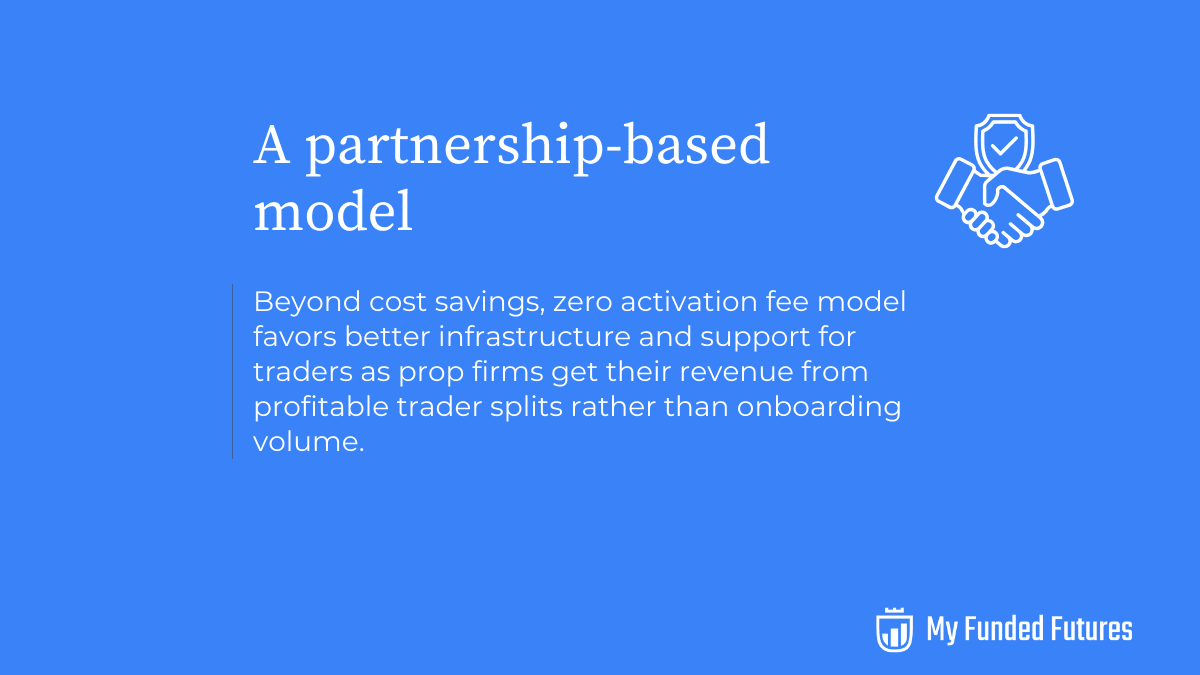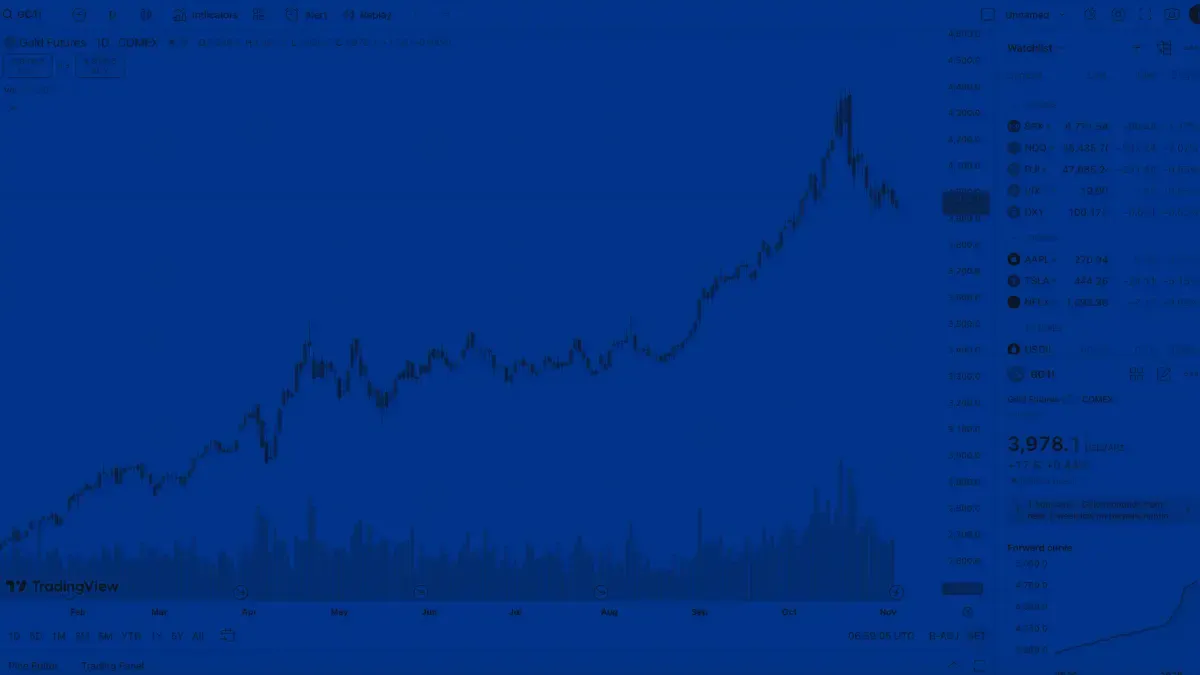Eliminating unnecessary costs while maintaining access to substantial trading capital represents the core appeal of futures prop firms with no activation fee. These specialized firms offer traders immediate platform access without the initial financial hurdles that often delay trading careers.
Understanding Zero-Activation-Fee Trading Models
The standard proprietary trading model typically includes multiple fee layers — evaluation costs, platform subscriptions, data fees, and sometimes activation charges to commence trading after passing evaluations. Prop firms without fees eliminate one or more of these cost components, most commonly the activation fee required to begin trading a funded account.
Fee Structures Explained
Traditional prop firms fees often include:
-
Evaluation purchase (challenge cost)
-
Reset fees for failed attempts
-
Monthly subscription charges
-
Activation fees when transitioning to funded status
-
Data and platform access expenses
Firms operating on a no-activation fee model eliminate the transition cost between passing an evaluation and beginning funded trading. This streamlined approach removes a significant financial barrier precisely when traders have demonstrated their capabilities and should be rewarded rather than charged again.
The most trader-friendly operations take fee reduction further by implementing one-time evaluation purchases without recurring subscription costs and free or heavily discounted reset opportunities. Some forward-thinking firms implement tiered activation fee models where the charge decreases based on evaluation performance speed or quality.
Economic Impact for Traders
The financial differences between standard and no fee prop firm models become substantial when calculated across a trading career. With traditional fee structures, costs often include initial evaluation ($100-500), activation fee ($50-200), monthly platform/data subscriptions ($50-150/month), and withdrawal processing fees ($20-50 per transaction).
Firms operating without activation fees eliminate several of these expense categories, saving traders $500-1,500 across a year while speeding up the timeline from evaluation completion to active funded trading. This economic advantage particularly benefits developing traders working with smaller account sizes.
Key Benefits Beyond Cost Savings

Pro Tip! 💡 Explore MyFundedFutures plan that come with zero activation fee.
While immediate financial advantages drive initial interest in no activation fee models, several operational benefits prove equally valuable.
Streamlined Transition Process
Traditional funded trader progression often involves administrative delays during the activation phase. Prop firms with no-fee operations typically implement immediate account activation upon evaluation success, seamless platform transition, and retention of established platform settings. This continuity eliminates the productivity gap often experienced when transitioning between evaluation and funded status.
Psychological Advantages
The elimination of activation fees creates significant psychological benefits for traders beyond mere cost savings:
-
Reduced financial pressure leads to more disciplined trading decisions
-
Eliminates "fee recovery" mentality that often drives overtrading
-
Maintains clearer focus on strategy execution rather than cost management
-
Enhances trust in the prop firm's commitment to mutual success
Enhanced Alignment of Interests
Fee structures directly influence institutional behavior. When firms eliminate activation fees, they shift their revenue focus toward profitable trader splits rather than onboarding volume. This creates stronger incentives to provide superior infrastructure, substantive educational resources, and responsive technical support. The absence of activation fees signals a business model oriented toward long-term trader partnerships.
Choosing the Right No-Activation-Fee Firm
Selecting appropriate prop firms without fees requires systematic evaluation beyond just the fee structure.
Capital Structure Assessment
Fee models must be evaluated alongside capital structure to determine true value. Account size options typically range from $25,000 to $250,000, with scaling protocols for capital growth that vary significantly between firms. Well-designed no activation fee firms balance fee elimination with reasonable capital structures rather than compensating with overly restrictive trading parameters.
Profit Distribution Analysis
Profit split arrangements reveal much about a firm's fundamental approach. Industry standards typically provide 80-90% to traders, with withdrawal frequency options affecting cash flow management. Quality lowest fee prop firm operations maintain competitive profit splits alongside reduced fee structures. However, traders should scrutinize the complete profit picture, including hidden deductions and consistency rules.
Trading Rule Compatibility
Operational parameters must align with individual trading methodologies:
-
Trading hour restrictions (standard: 18:00-16:10 EST)
-
News trading guidelines
-
Position holding duration allowances
-
Contract size progression policies
-
Stop loss requirements
The absence of activation fees loses significance if it is accompanied by trading restrictions that impede strategy execution. Therefore, when evaluating futures prop firms with no activation fee, traders should prioritize rule compatibility over marginal cost differences.
Also Read: How to Build a Futures Trading Plan For Complete Beginners
Technology Infrastructure and Reputation
Technical capabilities directly impact execution quality. Platform options such as NinjaTrader, TradingView, and others form the foundation of the trading experience. Prop firms without registration fee models should maintain enterprise-grade infrastructure despite reduced fee revenue.
Operational track record provides crucial insight into reliability. Withdrawal fulfillment consistency forms the foundation of trust, while rule enforcement transparency demonstrates operational integrity. Thorough due diligence becomes particularly important when evaluating newer firms using fee elimination as a customer acquisition strategy.
You may be interested: Best Futures Trading Platforms in 2025
My Funded Futures: A Model of Balanced Fee Structure

MyFundedFutures exemplifies a thoughtfully structured approach to prop firms without fees through its diverse account options and transparent pricing model.
Comparing Fee Structures Across the Industry
Traditional Multi-Fee Models
Conventional prop firm structures typically layer multiple fee types. Initial evaluation purchases ranging from $100-500 form the entry point, while monthly subscription costs between $50-200 maintain account access. Platform and data access fees add another $50-150 monthly to the expense structure. Activation charges for funded accounts ($50-200) create an additional hurdle, and reset fees for failed evaluations (50-100% of original cost) further increase the financial burden.
These cumulative expenses can substantially erode trader profitability, particularly for those still developing consistent approaches.
Hybrid Models
Many firms implement partial fee elimination while maintaining other revenue sources. One-time evaluation purchases without subscriptions eliminate recurring costs, while subscription models without initial evaluation charges reduce entry barriers. Some offer free evaluations with profit split adjustments that compensate on the backend. Activation fee replacement with higher monthly costs shifts the expense structure rather than eliminating it. Several operations eliminate reset fees in exchange for stricter evaluation parameters.
These approaches reduce certain cost components while compensating through adjustments elsewhere in the financial structure.
True No-Fee Operations
A select group of firms has implemented extensive fee reduction strategies. Complete elimination of activation costs forms the foundation of this approach, often accompanied by free or nominal-cost evaluations. The absence of monthly subscriptions removes recurring expenses, while minimal reset charges reduce failure penalties. Bundled platform and data access simplifies the cost structure.
Potential Drawbacks of No-Fee Models
While futures prop firms with no activation fee offer substantial advantages, several potential limitations warrant consideration:
-
Business Model Sustainability: Fee elimination places greater pressure on firms to generate revenue through trader profit splits, creating vulnerability to market downturns.
-
Rule Trade-offs: Some firms compensate through more restrictive trading parameters like lower drawdown percentages and stricter daily loss limits.
-
Technology Limitations: Infrastructure quality may be compromised through lower-tier data feeds or reduced technical support staffing.
Navigating the Transition to Zero-Fee Trading

Maximizing success with a prop firm with no fee structures requires strategic approach adjustments.
Documentation Preparation
No-activation fee firms typically streamline onboarding but still require thorough documentation. Identity verification through passport or license, proof of address via utility bills or bank statements, and tax identification information form the core requirements. Payment processing details and trading experience documentation complete the standard package.
Preparing these materials before evaluation completion minimizes administrative delays despite the absence of activation fees.
Platform Continuity Planning
Maintaining consistent trading conditions between the evaluation and funded stages enhances performance. Successful traders preserve platform settings and indicators while documenting exact execution parameters. Consistency in position sizing approaches and risk management protocols provides stability during the transition. Continuing successful trading hour patterns completes the continuity strategy.
This methodical transition approach preserves strategic integrity despite the change in account status.
Performance Metric Tracking
Detailed performance documentation provides leverage in prop firm relationships. Successful traders maintain detailed trade journals and document drawdown patterns throughout their funded journey. Recording profit consistency metrics across various market conditions provides context for performance evaluation. Tracking execution quality statistics creates accountability for both trader and firm.
Accessing Trading Funds Without Upfront Costs
The operational structure of futures prop firms with no activation fee creates significant advantages for traders focused on capital efficiency and streamlined processes. Selecting optimal prop firms without fees requires a thorough evaluation of capital structures, profit distribution models, and trading parameters alongside fee considerations.
For many traders, firms like MyFundedFutures represent an ideal balance through elimination of activation fees, favorable profit distributions, and diverse account options matched to different trading approaches.
This material is provided for educational purposes only and should not be relied upon as trading, investment, tax, or legal advice. All participation in MyFundedFutures (MFFU) programs is conducted in a simulated environment only; no actual futures trading takes place. Performance in simulated accounts is not indicative of future results, and there is no guarantee of profits or success. Fewer than 1% of participants progress to a live-capital stage with an affiliated proprietary trading firm. Participation is at all times subject to the Simulated Trader Agreement and program rules.
Frequently Asked Questions
Rate this article
Related Posts
Read our most popular posts
Which Prop Firms Offer Daily Payouts and How Do They Work?
Daily payout prop firms let traders withdraw profits far more frequently than traditional models, sometimes even from the very first funded day. Instead of waiting weeks for a payout cycle, traders can request withdrawals every day, subject to rules on drawdown, buffers, and minimum amounts. This guide explains how daily payout structures work, which futures prop firms are known for fast withdrawals, what to watch out for in the fine print, and how MyFundedFutures’ Rapid plan fits into this newer payout landscape.
5 Best Prop Firms With TradingView Integration
TradingView's powerful charting tools and real-time data make it a favorite among futures traders, but not every prop firm lets you trade directly from your charts. We've identified five firms that offer true TradingView integration, making it easy to analyze, execute, and scale without switching platforms.
What Is MyFundedFutures Scale Account and Is It The Right Plan For You?
The MyFundedFutures Scale Account is a middle-tier evaluation plan that balances affordability with growth potential. The scale plan offers weekly payout opportunities with increasing withdrawal limits, no daily loss cap, and a clear path to live funding after just five consecutive payouts.


